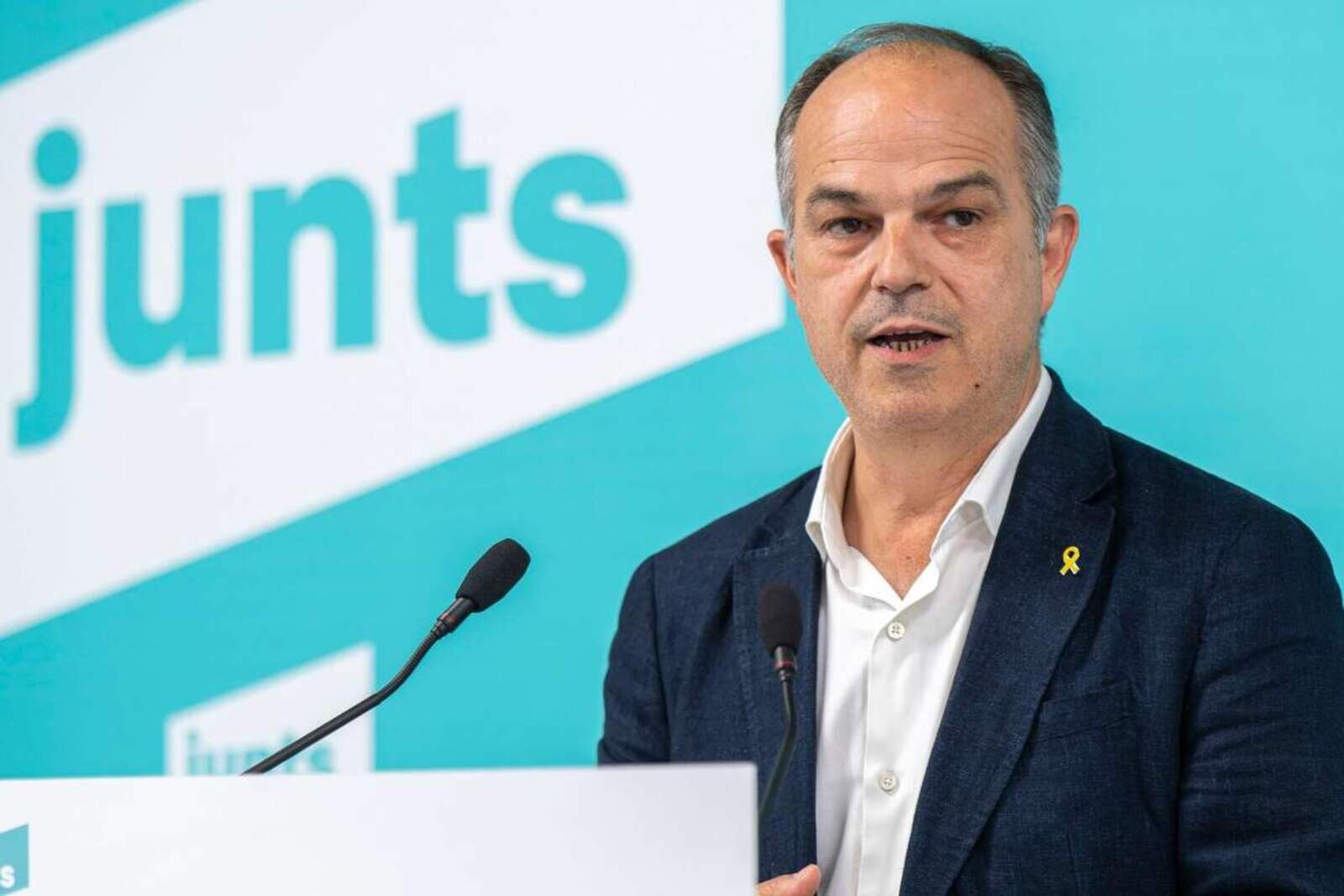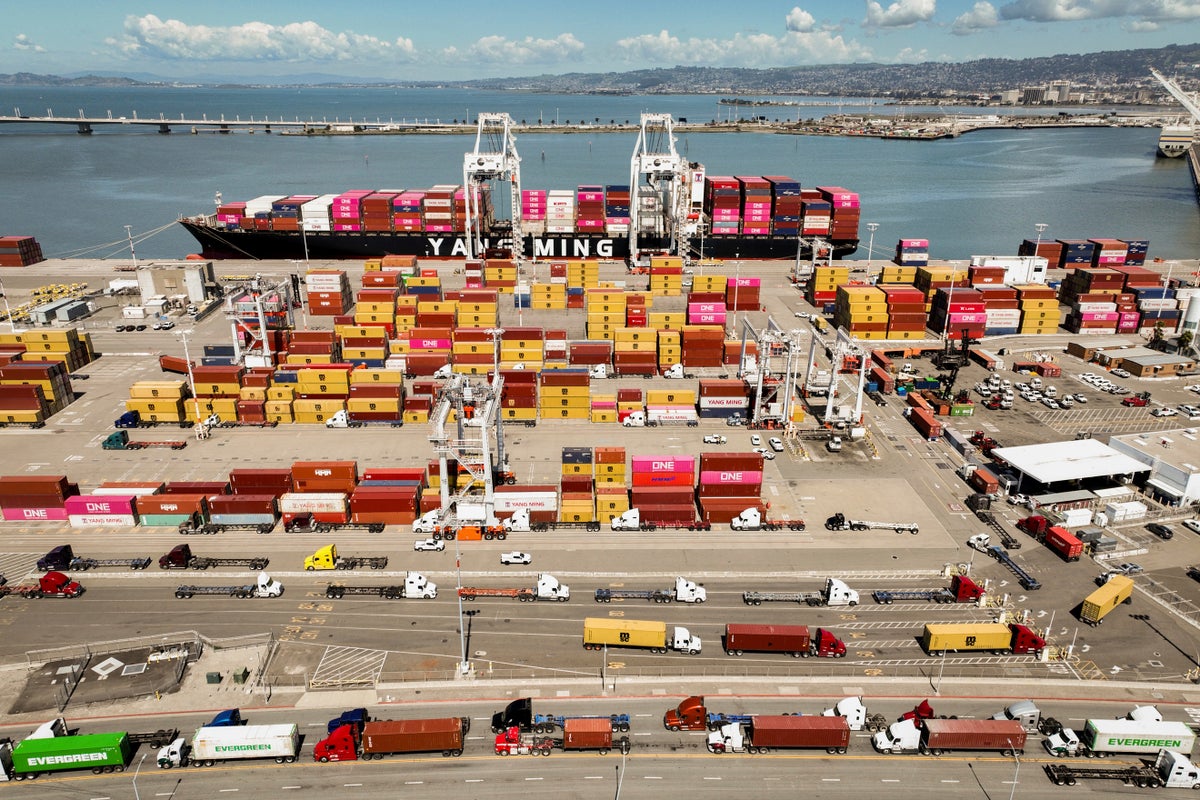President Donald Trump unveiled a sweeping new tariff plan Wednesday, hailing April 2 as “ Liberation Day ” for the American economy. He boasted that the move would revive U.S.
manufacturing and fix America’s trade imbalance. Trump imposed a “baseline” 10% tariff on essentially all imports, with steeper rates on a number of major trade partners. Chinese goods, for example, will be hit with 34% tariffs, and nations in the European Union will see a 20% rate.

And all countries that export cars to the United States saw a 25% tariff on foreign-made cars and auto parts take effect Thursday. Markets sank across the globe Thursday, with the S&P 500 index falling 4.8% in its worst day since the economic crash at the start of the COVID-19 pandemic in 2020.
Many of my fellow economists expressed alarm about the tariffs. Trump’s announcement is a massive gamble. What’s really at stake is trust – the trust other nations have in America’s long-standing reputation as a stable and predictable destination for global investment.
Once that trust is lost, it can be incredibly hard to win back. Administration officials have presented Trump’s strategy as a robust defense of American manufacturing and the middle class. But foreign direct investment in the United States – that is, when overseas companies build factories or expand operations in the U.
S. – depend on certainty. If global investors start to worry that U.
S. trade policy can shift abruptly and significantly, they may relocate their capital elsewhere. The administration’s aggressive approach to tariffs risks undermining the very confidence that has long made the U.
S. a top destination for global capital. Shannon K.
O’Neill and Julia Huesa Feb. 5, 2025 Trump defenders might argue that we should simply “go it alone” and make everything ourselves to become fully self-sufficient and funnel jobs to American workers. But that’s not always the most efficient – or beneficial – approach.
Foreign direct investments create thousands of good-paying jobs, boost local economies and expand production in ways that otherwise wouldn’t have been possible. Just because we can produce everything ourselves doesn’t mean we should. Foreign companies that build factories here are often bringing capital, technology and supply chains that complement – rather than replace – American businesses and workers.
When tariffs or trade restrictions scare off those investors, we don’t just lose money; we lose momentum. And the middle class pays the price through fewer jobs, higher prices and slower economic growth. Nowhere is this risk more visible than in the auto industry.
In 2023 alone, the United States attracted more than $148 billion in foreign direct investment, with nearly $42.9 billion tied to manufacturing, including in the automotive sector. Over the past few decades, major global automakers such as Toyota, BMW and Hyundai have established large manufacturing plants in states such as Alabama , Ohio and Kentucky .
These facilities employ thousands of Americans and contribute significantly to local economies. Many of them have seen notable expansion, upgrades and improvements in recent years, especially as consumers shift to electric vehicles. Even if Trump’s tariff push succeeds in getting automakers to manufacture more vehicles on U.
S. soil to overcome rising import costs, that doesn’t automatically benefit American consumers. He did get some domestic auto manufacturing gains when, during his first term, the threat of auto tariffs – alongside existing plans from the companies to expand their manufacturing in the U.
S. – helped spur Toyota to invest $1.6 billion in a North Carolina plant and Volkswagen to expand its existing operations in Tennessee .
It’s not far-fetched to imagine Honda or Mercedes following suit with new factories in Indiana or Texas. But here’s the catch: “Made in the USA” doesn’t always mean “made for less.” American auto plants often face productivity and efficiency gaps compared with foreign competitors.
Labor costs are higher in the U.S. Assembly lines move more slowly, partly due to stricter labor protections , less automation and aging infrastructure .
And American automakers such as Ford and General Motors still depend heavily on global supply chains. Even for vehicles assembled in America, U.S.
automakers import about 40% of the parts , such as engines from Canada and wiring harnesses from Mexico. When those parts are taxed, which is what a tariff essentially does, production costs go up. Credit rating agency Moody’s estimates that pickup trucks such as the Ford F-150 and Chevy Silverado could cost $2,000 to $3,000 more as a result.
Goldman Sachs projects price hikes of up to $15,000 , depending on the vehicle. Then, automakers face a tough choice: either raise vehicle prices and risk losing customers, or keep prices the same and take the hit themselves. That “hit” isn’t just about profit.
Lower income can mean less money for future investment, fewer new models, job cuts and even plant closures. In the long run, it's not just companies that pay the price – it’s workers and consumers too. Tariffs may aim to protect one industry, but their ripple effects can reach much further.
They raise costs for other sectors that rely on imported materials, they slow down production by making supply chains more expensive and less efficient, they squeeze profit margins, and they leave businesses and consumers with harder choices . Factories represent billion-dollar investments for which it can take years to recoup the costs. Mixed signals, such as the president calling tariffs “ permanent ” one moment and suggesting they might be negotiable the next, create a climate of uncertainty.
Again, that kind of uncertainty makes companies more hesitant to build, hire and expand. Investors are watching closely. If building in the U.
S. becomes more expensive and less predictable, is it still a smart long-term bet? When a company is deciding where to build its next battery plant or chip facility, say, volatility in U.S.
policy could be a deal-breaker. Jorge Guajardo Jan. 28, 2025 The consequences could surface soon.
Goldman Sachs has already lowered its 2025 U.S. gross domestic product growth forecast to 1.
7%, down from an earlier 2.2%, citing the risks from the administration’s trade policy. Consumers, still grappling with inflation and high interest rates, may begin to delay big-ticket purchases, especially as tariffs push prices even higher.
America’s trading partners aren’t standing still. In response to Trump’s announcement, Canadian Prime Minister Mark Carney said his country “ will fight back – with purpose and with force.” The European Union is exploring duties on American tech firms .
Japan, a longtime ally, is signaling unease . If these countries redirect investment to other nations, the U.S.
could lose its competitive edge for years, if not decades, to come. While the roughly 1 million Americans who work in the auto manufacturing industry might be helped, the rest of the more than 150 million Americans who make up the total labor force could be hurt. When taxes on imports drive up costs for making goods, that can trigger a chain reaction, hurting retailers, stalling service-sector hiring and slowing economic growth.
Consumers will feel it, too. In addition to the increase in their bills, higher prices on goods mean lower sales, reduced tax revenues and shrinking profits. All of that weakens the economy at a time when household budgets are already strained.
The U.S. has seen how trade policy can shape investment decisions – just in reverse.
In the 1980s, Japanese automakers responded to the U.S. restricting the number of cars they could sell in America not by withdrawing but by building plants in the United States.
That response was possible because policies were clear and negotiated, not abrupt or hostile. Today, the story is different. Volatile, unilateral tariffs don’t build trust – they erode it.
And when trust erodes, so does investment. Yes, a factory in Indiana or Kentucky might reopen. But if that comes at the cost of deterring billions of dollars in long-term investment, is it worth it? While the president may celebrate April 2 as Liberation Day, markets may come to see it as the tipping point when global confidence in the U.
S. economy began to crumble. Bedassa Tadesse is a professor of economics at the University of Minnesota Duluth.
This commentary was produced in partnership with The Conversation , a nonprofit, independent news organization dedicated to bringing the knowledge of academic experts to the public ..
Politics

The Trump Tariff Formula Makes No Sense

Nowhere is the risk more visible than in the auto industry.















